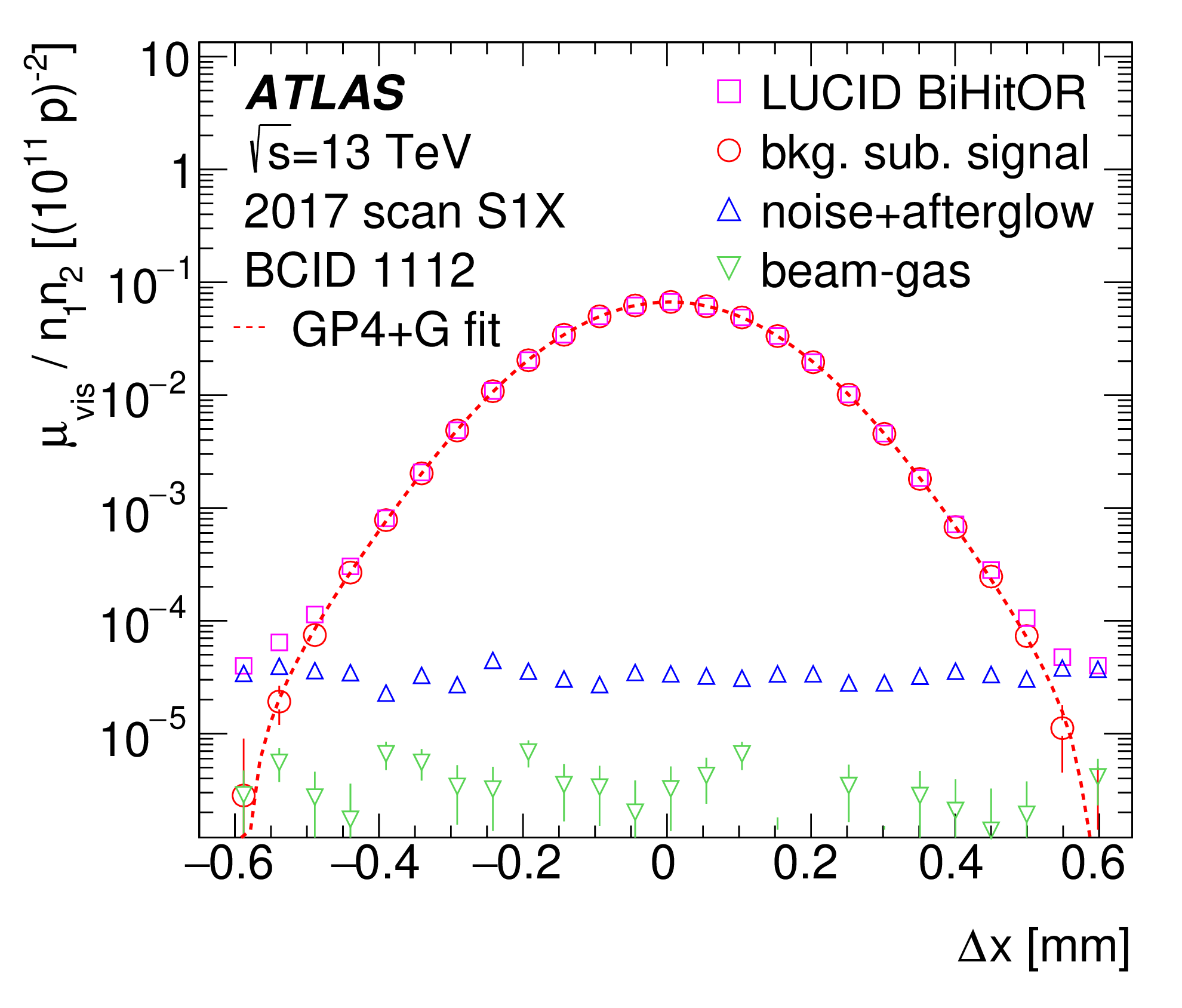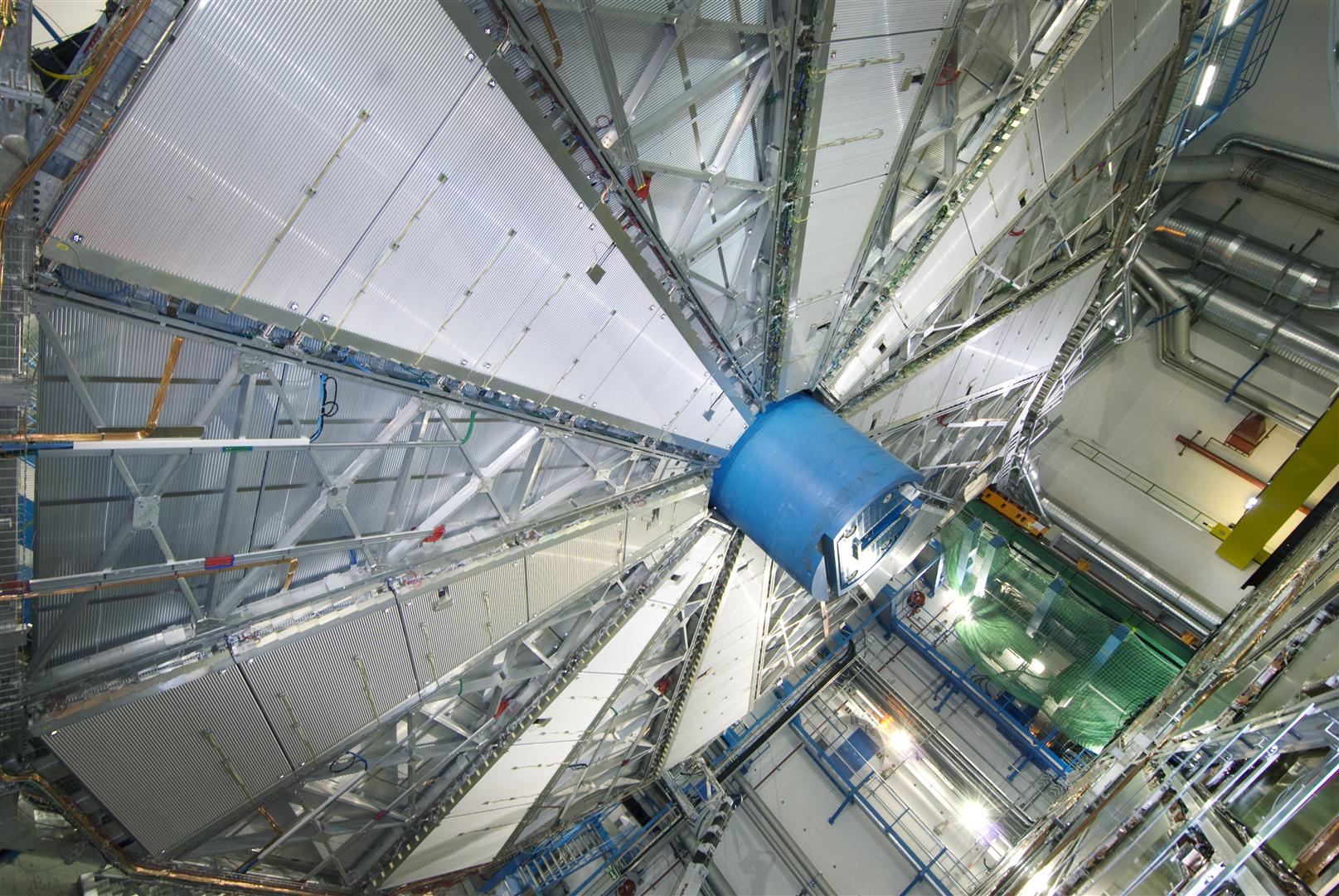First collisions at injection energy
8 May 2015 | By
On the morning of 5 May 2015, ATLAS recorded the first scheduled proton beam collisions since the Large Hadron Collider and its experiments started up after two years of maintenance and repairs. The collisions, which took place at the injection energy of 900 GeV, enable the experiments -- ATLAS, CMS, ALICE and LHCb -- to tune their detectors and is an important step in preparing for the 13 TeV high energy collisions this June.

For collisions at injection energy, proton bunches of 450 GeV (one proton has a mass of about 1 GeV) are injected into the LHC from the Super Proton Synchrotron. Three bunches of several tens of billions of protons per beam were circulated to provide collisions in all four experiments. Once circulated, beams are tuned to overlap in the interaction points inside the experiments and provide the first scheduled collisions.
"With this run, ATLAS had the opportunity to have a full rehearsal of what will happen only in a few weeks from now. It will become, at nominal energy and with beams of much higher intensities, the normal way of running for the next few years," says Alessandro Polini, ATLAS' Run Coordinator.
ATLAS records the data of the proton collisions at injection energy and uses it to validate the full chain of data-taking -- from the subdetectors recording collisions to the final storage of filtered data. These collisions produce very different data from that taken with cosmic rays and beam splashes in the last few months.
"With this run, ATLAS had the opportunity to have a full rehearsal of what will happen only in a few weeks from now. It will become, at nominal energy and with beams of much higher intensities, the normal way of running for the next few years," says Alessandro Polini, ATLAS' Run Coordinator.

Data collected with cosmic rays have limited use and data from beam splashes allow synchronization of only one-half of the detector at a time. Collisions create particles which start from the beam interaction point and fly through the ATLAS detector's many layers. The data collected from these events can be used to calibrate the subdetectors and ensure that they fire in the correct place at the precise instant that a particle passes through. Simultaneously reconstructing flight paths of the particles from many parts of the detector helps check the alignment and synchronization of the subdetectors and allows the whole infrastructure of the beam and background monitoring devices to be calibrated.
After the first collisions on Tuesday, the LHC delivered a second and longer run with quiet beams on Wednesday evening. During this run, after careful checks of the background conditions, ATLAS managed to turn on and record tracks with all of the subdetectors including all of the silicon pixel layers, which are closest to the interaction region. These include the newly installed Insertable B-Layer, which has been turned on for the very first time with beam in the machine.



